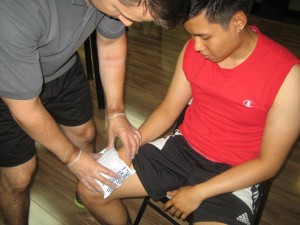Most minor wounds can be managed at home. As for serious wounds, a trip to a doctor or nearest healthcare facility is required. It is important to note that any injury that involves a break in the skin is considered as a wound.
https://www.youtube.com/watch?v=evgkXI2Pepw
Wounds exposes the tissues beneath the skin which makes it vulnerable to bacteria, debris and dirt. If a wound is significantly deep, wide or contaminated, a doctor should be consulted for treatment.
Assessment of wounds
The initial task of the doctor is to assess the risk for infection. A

tetanus shot might be required if the individual stepped on a rusted nail or sustained a wound that is dirty or in a vulnerable part of the body.
Cleansing of the wound
Clean wounds are the simplest to manage. These are not contaminated by bacteria and the risk for infection is low. A good example is a surgical wound since operations are carried out in mostly sterile conditions.
Oftentimes wounds are clean but require extra care due to their location or depth. A wound in the foot might come in contact with dirt and bacteria, thus it requires medical care.
The dirty wounds can be upsetting. A gunshot wound, abscess or those that introduce foreign material into the body puts one at risk for infection. These wounds might require continuous care and special treatment to ensure proper healing.
Wound closure
If a wound is clean, the doctor might decide to close it using stitches on the first visit. The area surrounding the wound is numbed using a topical or local anesthetic.
The doctor might utilize stitches that dissolve over time. These are utilized to connect the tissue below the skin while tape or staples can be utilized on the skin surface. The non-dissolving stitches usually stay in place for a week up to 10 days and remove on the follow-up visit.
Home care for a wound
The doctor will provide specific instructions on how to care for the wound at home. Depending on the severity of the wound, the doctor will provide nutritional advice to help hasten the healing process.
An over-the-counter or prescription pain medication is recommended. It is vital to follow the instructions given by the doctor carefully. If there are any indications of infection such as itchy and reddened skin around the wound, fever or swelling, consult a doctor right away. There might be a need for additional wound care or even antibiotics to reduce the risk for infection during treatment.
Disclaimer / More Information
The information posted on this page on wounds is for learning and educational purposes only. To learn to recognize and manage different types of wounds and deliver proper wound care, register for first aid training at one of our training centers located throughout Canada.
